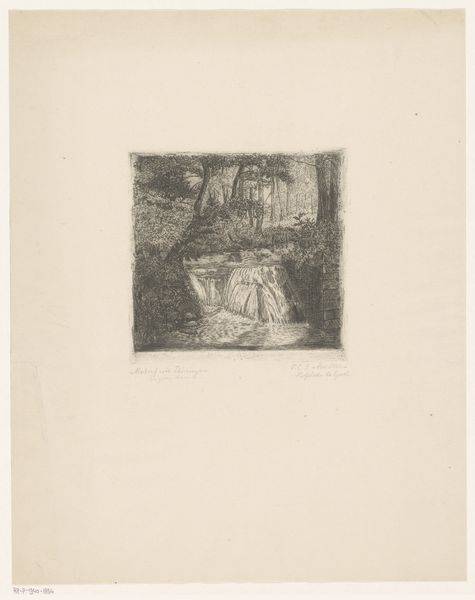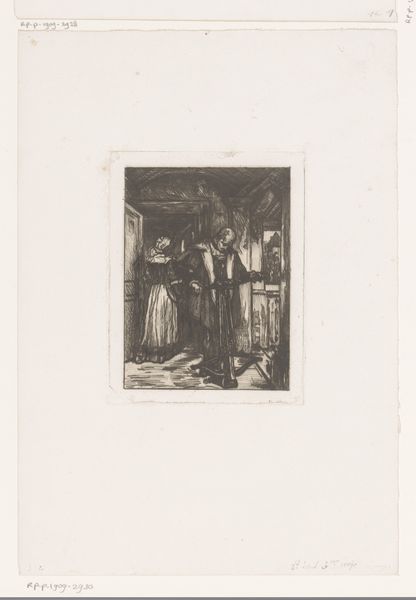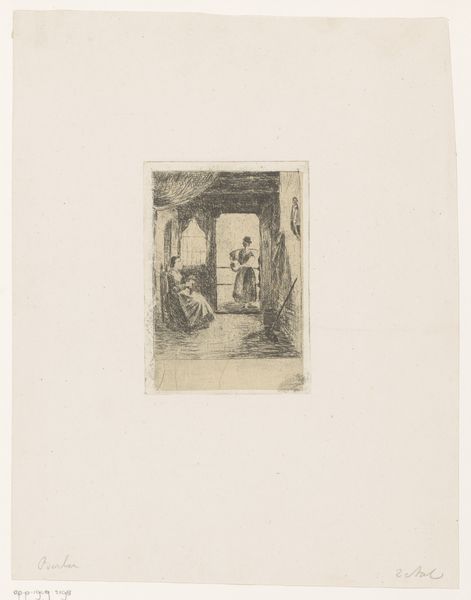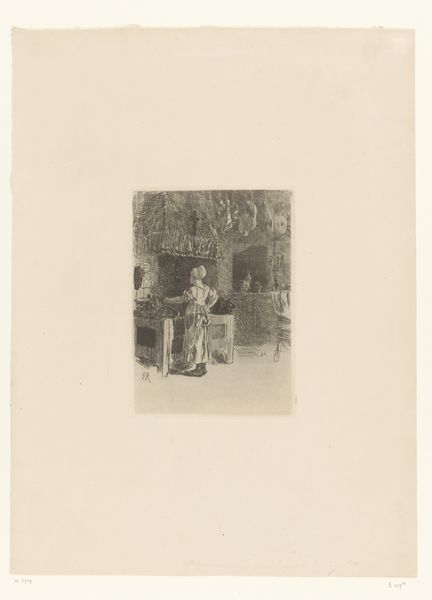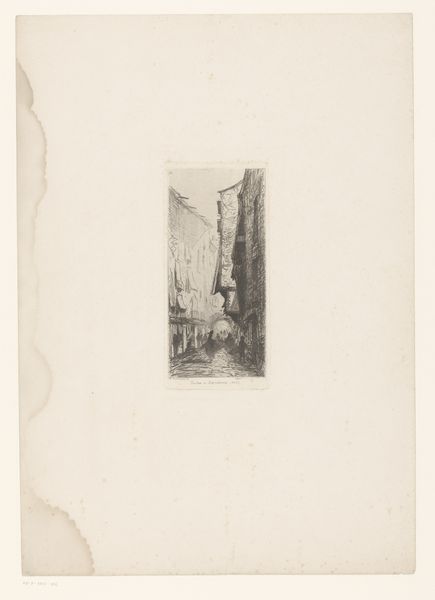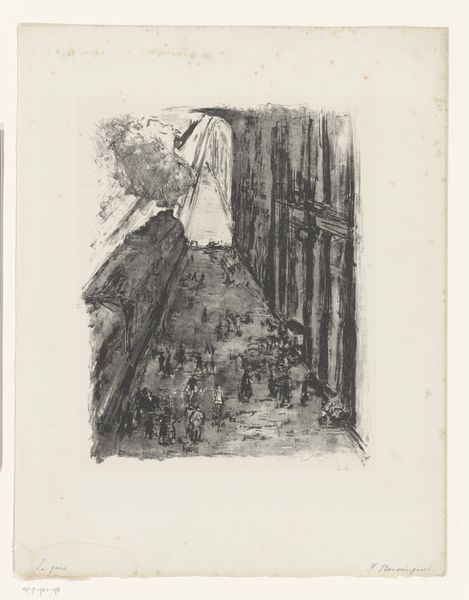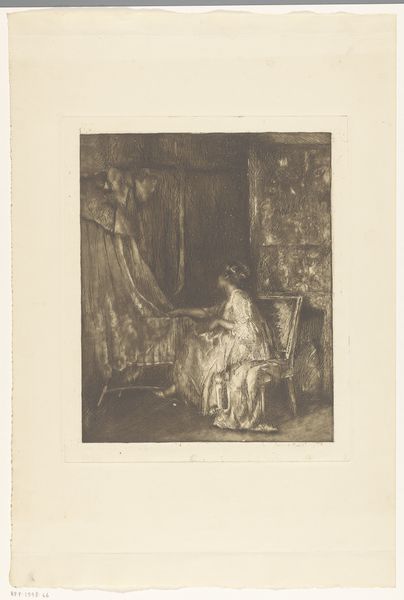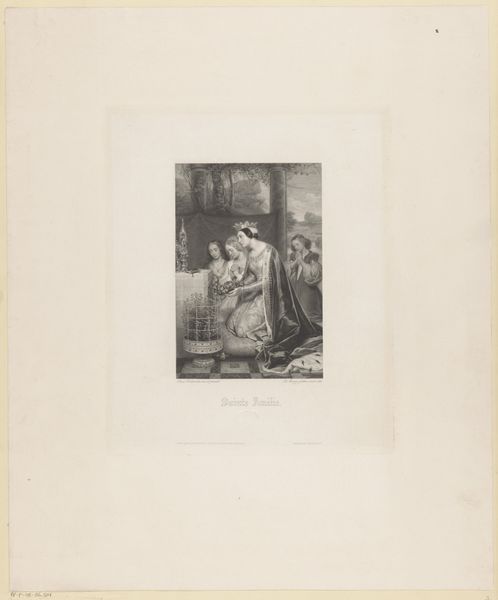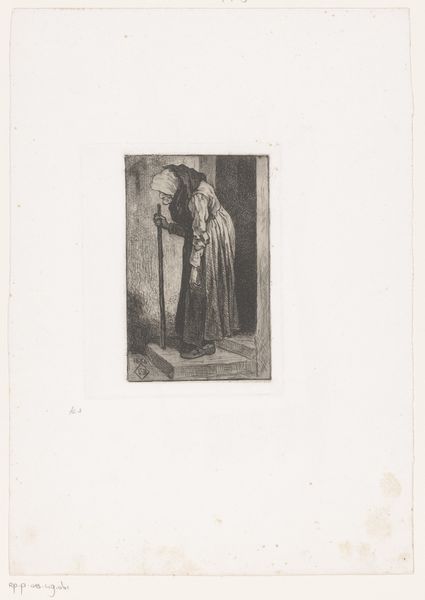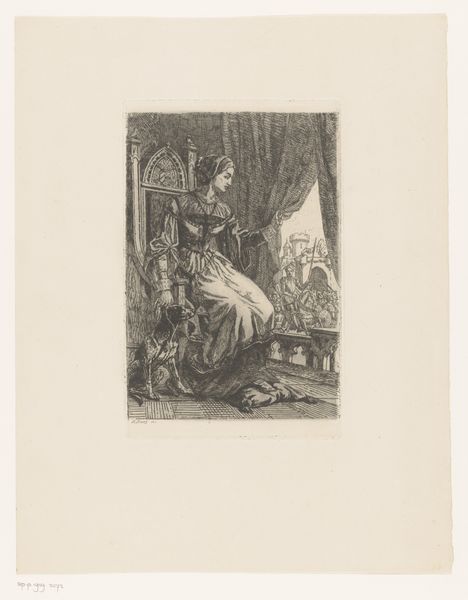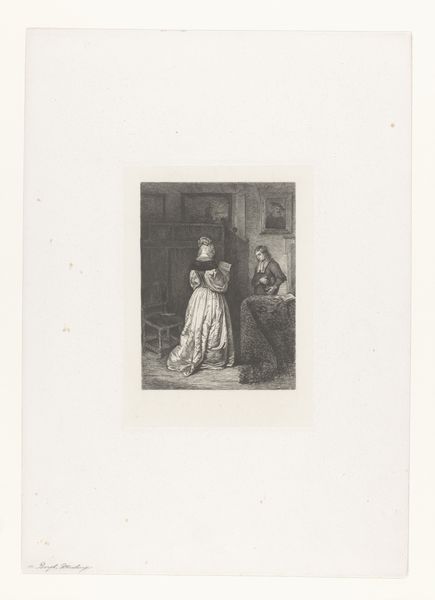
drawing, print, etching, paper
#
drawing
#
medieval
#
narrative-art
# print
#
etching
#
landscape
#
figuration
#
paper
Dimensions: height 156 mm, width 119 mm
Copyright: Rijks Museum: Open Domain
Curator: This etching by Adrien Aubry, created in 1872, is titled "Minnend paar wandelt in een middeleeuwse stad"—a couple strolling in a medieval city. It resides here at the Rijksmuseum. Editor: My initial impression is one of hushed intimacy. The composition, though small, seems to cradle the couple within a shared, private moment against the backdrop of these elaborate gothic structures. There is an overwhelming sense of mystery here, no? Curator: Most definitely. Note how the artist employs light and shadow. The crispness of the lines creates an almost dreamlike quality, typical for the narrative illustrations favored during this period. Semiotically, it could be read as an intersection between tangible reality—the sharp architectural forms—and romantic ideation with the embracing couple at center. Editor: Observe also the posture of the embracing couple. Her loose white dress signifies the purity and innocence, contrasted by the medieval knight’s more somber and restrictive armor which emphasizes duty and honor. The dog adds a note of domesticity, emphasizing marital fidelity. These symbols build an elaborate commentary on gendered relationships in medieval iconography. Curator: The contrast of materials, techniques, and tone, evokes nostalgia. Aubry contrasts a crisp etched style against an earlier time, revealing a yearning. What stands out to me, formalistically, is how the dog mirrors the lines of the architecture; that relationship between foreground and background is expertly constructed to suggest both containment and protection. Editor: Exactly. This idealized medieval scene is heavily dependent on symbolism and cultural memory. Medieval art wasn't just representation; it functioned as a guide to moral conduct, a window into idealized social orders and virtues. These figures likely served as moral exemplars—or warning tales—to contemporary audiences consuming imagery featuring them. Curator: I would contend the linearity of the drawing guides the eye carefully through these didactic gestures of medieval storytelling. Aubry uses architectural mass and intimate gesture to underscore social order and idealize values, with crisp etching to draw clean distinctions between virtue and… what is being protected against, presumably something uncivilized or evil lurking somewhere. Editor: Interesting how form follows the implied historical content in ways that deepen—or reiterate—the cultural symbolism in play here. Even today, the figures, gothic motifs and dog evoke notions of timeless love and fidelity to those encountering the image today. Curator: A potent summation. This artwork then serves as an exquisite example of structure, material, and symbolic framework perfectly coalescing. Editor: Indeed; and the careful employment of such iconic archetypes echoes powerfully even now, across the centuries.
Comments
No comments
Be the first to comment and join the conversation on the ultimate creative platform.
